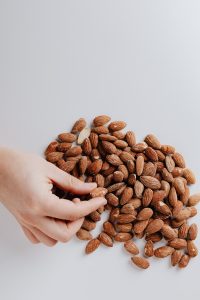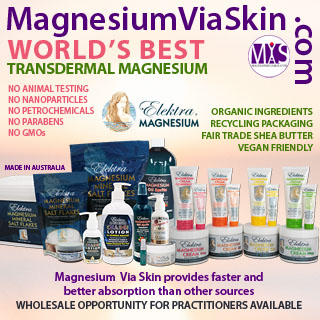Magnesium Extraordinaire – Part 1
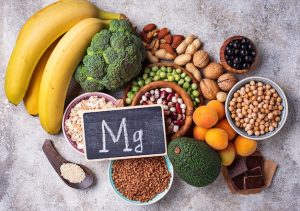
Magnesium Extraordinaire
When I first learned about magnesium (Mg) in 1963, hardly anyone ever mentioned this mineral or was aware of its vital role in the human body. From my research, I learned that my kidney stones were from a Mg deficient liquid diet that I foolishly embarked upon for a short time. After this product caused the death of several people, the company stopped selling it.
Previously, in 1957, my mother also suffered from kidney stones because of a magnesium-deficient diet. Back then, the protocol was surgery to remove her kidney, which she did upon her specialist’s recommendation. Two years later (1959), additional kidney stones formed in her remaining kidney because her Mg deficiency was never addressed or even brought to her attention. Again, the protocol was to cut her open and remove 15% of her remaining kidney. Then, her specialist gave her the drug streptomycin, which made her deaf at age 35!
Despite such brutal medical malpractice, she survived. However, with four small kids, her Mg deficiency, surgeries, drugs, and medical malpractice had a terrible, life-long impact on our family. This also taught me that medical protocol was not trustworthy, drugs had harmful side effects, and sufficient Mg was necessary to prevent kidney stones. I also learned that a supplement of another mineral, manganese (Mn), could have prevented her inner ear nerve damage and subsequent hearing loss.
To help prevent a repeat of what happened to my mother or me, I learned a great deal about the many vital functions of Mg and the perils of a Mg imbalance or deficiency. Today, every health-conscious practitioner and most people know about the benefits of magnesium extraordinaire!
Not only does Mg in balance with other minerals (e.g., calcium and phosphorous) prevent the formation of kidney stones, but it also plays a crucial role in hundreds of other vital functions.
CHEMISTRY OF MAGNESIUM
Magnesium, Mg, is a silver-white metal among five other alkaline earth series. Its atomic number is 12 in the periodic table. When used in pyrotechnics, it burns with a brilliant white flame that includes ultraviolet wavelengths. Mg is also in fireworks, marine flairs, and theatrical effects such as lightning and pistol flashes. This bright light of Mg is activated when it performs hundreds of vital tasks in the human body.
Mg is the eighth most abundant element in the Earth’s crust and the fourth most common element in the Earth (after iron, oxygen, and silicon). It makes up 13.9% of the planet’s mass. Mg is the third most abundant element dissolved in seawater, after sodium and chlorine.
Naturally, Mg occurs only in combination with other elements, where it almost always has a +2 oxidation state. When produced in nature, it is highly reactive and burns with its characteristic brilliant-white light. But, when in the atmosphere, it forms a thin film of oxide that partly inhibits its reactivity. As above, so is below. The human body is a miniature Universe.
Magnesium in Plants
The vital interaction between phosphate and magnesium ions makes Mg essential to the nucleic acid chemistry of every cell of all known living organisms. Plants require magnesium to synthesize chlorophyll, which is vital for photosynthesis. Mg, in the center of the porphyrin ring in chlorophyll, functions like iron in the center of the porphyrin ring in heme. Mg deficiency in plants causes late-season yellowing between leaf veins, especially in older leaves. It can be eliminated by either applying Epsom salts, or crushed dolomitic limestone, to the soil.
Magnesium in the Body
To fully understand and appreciate the workings of magnesium in the body, it helps to learn some chemistry and a bit of history.
An ion is an atom or molecule with a net electrical charge. A cation is a positively charged ion with fewer electrons than protons that moves downward. An anion is a negatively charged ion with more electrons than protons that moves upward. Opposite electric charges are pulled towards one another by electrostatic force. Thus, cations and anions attract each other and readily form ionic compounds.
In 1834, English polymath William Whewell) and English physicist and chemist Michael Faraday devised the words anode and cathode, in addition to anion and cation as ions attracted to the respective electrodes.
The Mg cation is the second-most-abundant cation in seawater and sea salt. Mg is highly reactive and reactivates with water at room temperature. In the human body, it is the eleventh most abundant element by mass.
Every cell in the body contains Mg. 60% of Mg in the body is present in the bones, while the rest is in muscles, soft tissues, and fluids, including blood.
Mg is essential to all cells. Over 300 enzyme reactions require magnesium ions for their catalytic action, including all enzymes using or synthesizing ATP and those that use other nucleotides to synthesize DNA and RNA. The ATP molecule is in a chelate with a magnesium ion.
BENEFITS of MAGNESIUM
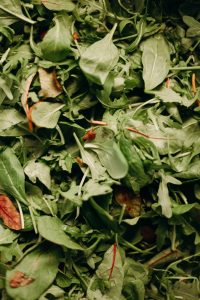
- Energy Creation to convert food into energy.
- Coronary and Heart Function and Regulation to help balance blood pressure.
- Gene Maintenance to help create and repair DNA and RNA.
- Muscle Movements, aiding in muscle contraction and relaxation.
- Nervous System Regulation of neurotransmitters to send messages throughout your brain and nervous system.
- Protein Formation to create new proteins from amino acids.
Magnesium:
- Alleviates morning sickness in pregnancy (Pregnancy hormones inhibit the body’s ability to absorb magnesium, which causes a vicious cycle. A Mg deficiency produces excess cortisol, which causes nausea that leads to more stress, requiring a higher amount of Mg);
- Alleviates pain and is anti-inflammatory;
- Assists in bone formation and joint and skeletal health;
- Assists in the absorption of vitamin D, calcium, and vitamin K2;
- Assists in the vitamin D pathways (Vitamin D deficiency is present in immune dysfunction and many diseases, including various cancers, arthritis, osteoporosis, and mental illness);
- Assists in the production of GABA, which controls the production of hormones like serotonin that produce calmness and well-being;
- Assists the mitochondria in ATP (adenosine triphosphate) production for energy;
- Assists with heart rhythm and calcium to normalize blood pressure;
- Dilates the blood vessels to allow blood flow to the extremities, benefiting people with Raynaud’s syndrome;
- Enhances sports performance;
- Enhances the effectiveness of nutrition, medical treatments, surgery, acupuncture, and chiropractic care;
- Helps to overcome insomnia and asthma;
- Helps to overcome constipation and headaches;
- Helps to overcome depression, defensiveness, and aggressive behavior;
- Helps to overcome muscle spasms, aches, and pains;
- Helps to protect the body against environmental stresses, especially in children and the elderly;
- Participates as a co-factor for many other nutrients and hundreds of enzyme activities;
- Participates as a natural and effective muscle relaxant, anti-inflammatory, and calcium-channel blocker;
- Promotes coronary and heart health;
- Reduces the harmful effects of stress and ADHD in children;
- Supports healthy blood sugar levels and insulin sensitivity;
- Works to prevent heart palpitations and heart attacks/cardiac arrests. (The highest amounts of magnesium are in the heart, specifically within the heart’s left ventricle);
- Works with potassium to prevent painful leg or foot muscle cramps.
MAGNESIUM IN NUTRITION & DIET
Foods containing Mg are only Mg-rich if they are organically grown by a farmer that uses nutrient-rich fertilizer containing magnesium.
Organic spices, nuts, cereals, and cocoa are good sources of magnesium. This is why women often crave dark chocolate before their period when their body’s level of Mg drops. Unfortunately, most chocolate contains sugar that depletes Mg. Green leafy vegetables, such as spinach, kale, and chard, are rich in magnesium.
Magnesium Rich Foods
- Pumpkin Seeds: 156 mg/oz/28g -37% of the DV
- Quinoa: 118 mg/1cup/180g – 28% of the DV
- Chia seeds: 111 mg/oz/28g – 26% of the DV
- Almonds dry roasted: 90 mg/oz/28g 19% of the DV
- Spinach, boiled: 78 mg/1/2 cup/90g – 19% of the DV
- Cashews: 74 mg/oz/28g – 18% of the DV
- Black Beans, cooked: 60 mg/ ½ cup/86g – 14% of the DV
- Baked Potato with skin: 49 mg/2.5oz/98g -10% of the DV
- Brown Rice, cooked: 42 mg/½ cup/100g – 10% of the DV
- Yogurt, plain, low-fat: 42 mg/8oz/224g 10% of the DV
- Oatmeal: 36 mg/1 packet – 9% of the DV
- Banana: 32 mg/1 medium – 8% of the DV
- Salmon cooked: 26 mg/3oz/85g – 6% of the DV
- Halibut cooked: 24 mg/3oz/85g – 6% of the DV
- Raisins: 23 mg/½ cup/100g – 5% of the DV
- Avocado: 22 mg/½ cup/100g – 5% of the DV
- Beef, ground 90% lean, broiled: 20 mg/3oz/85g – 5% of DV
- White Rice, cooked: 10 mg/½ cup/85g – 2% of the DV
Rooibos Tea, organic from South Africa, contains Mg and is rich in antioxidants and flavonoids. It is low in tannins, caffeine-free, and served either warm or cold.
Dietary Recommendations
In the UK, the Recommended Daily Values for magnesium are 300 mg for men and 270 mg for women. In the United States, the Recommended Dietary Allowances (RDAs) are 400 mg for men ages 19–30 and 420 mg for older; for women, 310 mg for ages 19–30 and 320 mg for older. However, these levels do not reflect how much Mg is required to maintain good health in today’s stressful world. True dietary recommendations vary, depending on many factors, such as age, body type, lifestyle, health, medications, environment, and biochemical individuality.
Mg supplements come in many forms:
- magnesium aspartate
- magnesium chloride
- magnesium citrate
- magnesium glycinate
- magnesium lactate
- magnesium malate
- magnesium oxide
- magnesium sulfate/Epsom Salts/
- magnesium taurate
Form Features
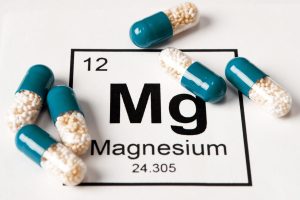
Excess Mg is a rarity as it is necessary for hundreds of body functions and is often deficient. Plus, excess Mg is cleared from the body by the kidneys. However, people with renal problems, kidney failure, or Addison’s disease are more likely to absorb too much magnesium.
Symptoms of excess Mg (hypermagnesemia) include lethargy, facial flushing, diarrhea, nausea, muscle weakness, low blood pressure, urine retention, and breathing difficulties.
Magnesium Chloride (MgCL2), is well absorbed and has many benefits. In North America, it is produced primarily from Great Salt Lake brine. Other sources are the Dead Sea brine in the Jordan Valley or the evaporation of seawater. It comes in higher concentrates as the mineral bischofite (MgCL2.6H2O) from ancient seabeds such as the Zechstein seabed in NW Europe. Hydrated Mg chloride (MgCL2.nH2O) is highly soluble in water.
Transdermal Magnesium Chloride is the most bioavailable form of Mg chloride. It also bypasses problems associated with oral Mg supplements (e.g., loose bowels).
Elektra uses Mg chloride in its transdermal creams, lotion, and oil, making it superior to other brands. Elektra Magnesium Via Skin is their US Distributor.
Terra Aqua and Mia Aqua, by Masters of Health Spa, are two divine, chakra-balancing body spray mists that nourish with Mg chloride and essential oils while producing a heavenly experience.
Magnesium Sulfate/Sulphate (MgSO4) crystalizes as hydrates and loses water upon heating. Mg sulfate monohydrate is the form most used in agriculture. Mg sulfate heptahydrate is Epsom Salts. The WHO recommends Mg sulfate heptahydrate for medical injection.
Since 1618, practitioners have used Mg sulfate (MgSo4) to treat arrhythmia, constipation, high blood pressure, injuries, poisoning from lead, barium, and chloride, seizures, aches, muscle pain, sore feet, and other ailments. Also, it is used as a bronchodilator for asthma and is on the WHO’s list of essential medicines.
Epsom Salts (MgSO4.7H2O) are crystals of hydrated Mg sulfate heptahydrate that come from a bitter saline spring in Epsom in Surrey, England. It is a natural source of both magnesium and sulfur. Epsom salts are a purgative, exfoliant, muscle relaxer, and pain reliever in baths. However, these are different from Epsom salts used for gardening because they contain aromas and perfumes which are unsuitable for plants.
© 2022 Lady Carla Davis, MPH www.NourishingBasics.com
Read Magnesium Extraordinaire – Part 2 in the November issue of Masters of Health Magazine.
- SHARE THIS POST

